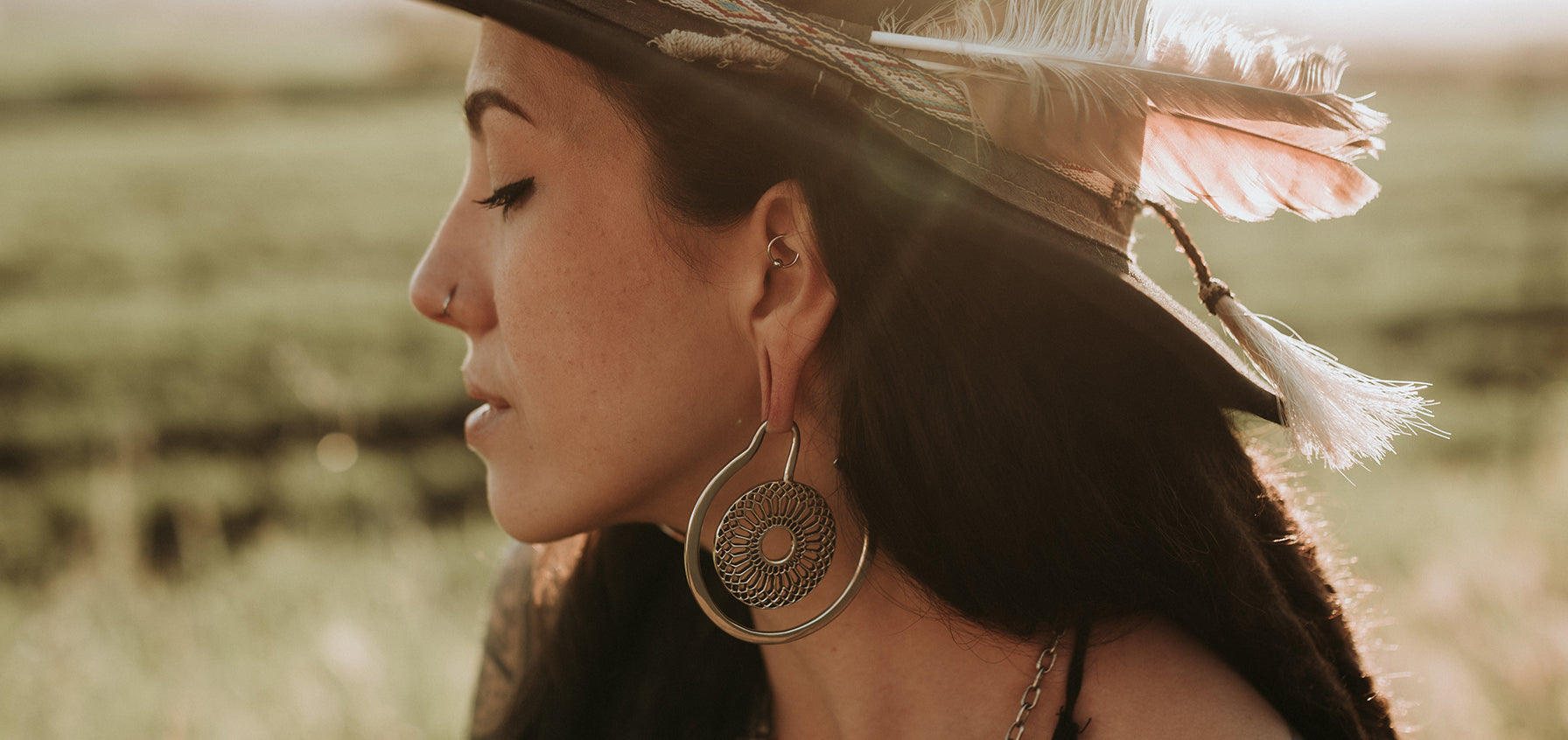
9 Essential Things to Know About Cartilage Piercings and Aftercare
“I want a cartilage piercing,” you may be thinking. But did you know that there’s no one specific cartilage piercing? Instead, it’s a whole category of piercings and they aren’t just on your ear either. They range from everything on the ear, such as a daith; rook; conch; or helix piercing, to nostril piercings too.

Whether you’ve seen the likes of Keke Palmer, Beyoncé, Miley Cyrus, or Kylie Jenner with some sort of non-lobe ear piercing, or you have a lobe piercing but want to explore more types of piercings, it’s important to learn about cartilage piercings and how to take care of them first.
Keep reading on and we’ll fill you in on all you need to know.
Find a Reputable Piercer
Whether you’ve selected which cartilage piercing you want or not, the first step is to find a reputable piercer. Sure, you could go to Claire’s or Piercing Pagoda in the mall. However, they pierce cartilage with guns. This is something that the Association of Professional Piercers warns against for numerous reasons.
First, piercing guns can’t be fully sterilized the way piercing needles can. This allows for the possibility that you’re being pierced with a needle that has someone else’s bacteria or blood on it. Gross, right?
Secondly, piercing guns strike with such a force that it can be dangerous to your cartilage. It could result in shattered cartilage or other conditions that will leave your ear disfigured.
Third, the jewelry that is used with piercing guns isn’t sufficient to heal a piercing. Often, the studs and backs are too short to allow for any swelling of the area. This leaves the tissue to grow over the piercing sometimes.
Instead of dealing with all of the above issues, it’s best to find a reputable piercer. The Association of Professional Piercers has a directory you can use. However, you can also use Google Maps, Yelp, or just ask around.

Additionally, if you’re not decided on which cartilage piercing you want or would be best for your anatomy, you can discuss this with your piercer and they can help you find the perfect location and piece of jewelry.
Preparing Your Body Can Help the Healing Process
We get it—piercings are exciting! And sometimes the excitement (and maybe nerves) can cause you to lose your appetite. However, it’s important that you fuel your body before you get pierced.
Make sure you get a good night’s sleep the day before you get pierced. On the day of your piercing appointment, make sure you’re hydrating and eat a nice meal or snack before your appointment. Something rich in vitamins and nutrients will help your body store them so they can aid in healing later in the day.
How Painful Is a Cartilage Piercing?
The pain of a cartilage piercing varies from person to person and from cartilage piercing to cartilage piercing.
That being said, a cartilage piercing will hurt slightly more than a standard lobe piercing because the tissue being pierced is thicker—the needle must go through actual cartilage rather than simply soft tissue.

Cartilage Piercings Take Longer to Heal
Cartilage piercings take anywhere from two to six months to heal, with some even taking so long as a year. Part of the reason why they take so long to heal is the fact that they aren’t as vascular as soft tissue, so there’s less blood flow. Because blood flow is an essential part of the healing process, it takes longer to heal.

You Need to Follow Proper Aftercare
Getting the piercing is over in an instant. Once you leave the shop, it’s important to keep up with proper aftercare procedures.
No Touching
We know it may be tempting to touch and toy with the brand-new adornment to your body, but that’s the first rule. Do not touch your new cartilage piercing. Your hands have bacteria on them and your new piercing is essentially an open wound. Touching your piercing could introduce bacteria and cause an infection. Additionally, any movement to the jewelry could irritate the piercing, elongating the healing process.
Soak It!
It may be tempting to rip off the crusties that coat your jewelry, but don’t do it. It’s essentially ripping a scab off a healing wound. Instead, you’re going to want to wash your piercing with a sterile saline solution, such as the one by NeilMed.

You can use water to rinse off any stubborn crusties. When you’re drying the area, you are going to want to pat it dry with a clean disposable towel. Make sure you don’t use a cloth towel that can snag on the jewelry.
Be Careful Sleeping on It
Sleeping on the side of your piercing can be uncomfortable and painful as it heals. It can also irritate your cartilage piercing.
One way you can avoid sleeping on your piercing is to get an airplane pillow and use it to create a little donut on your bed. Place your ear in the center of the pillow and snooze away.
Avoid Public Bodies of Water
We know, the beach, pool, lake, river, etc. may be calling, but you need to avoid public bodies of water. They can harbor bacteria that can get into your healing cartilage piercing and cause an infection.
Conclusion
Cartilage piercings are fun, fashionable, and oh so versatile. And if you do decide to get yours, we’ve got all the jewelry options you could ever hope for.

